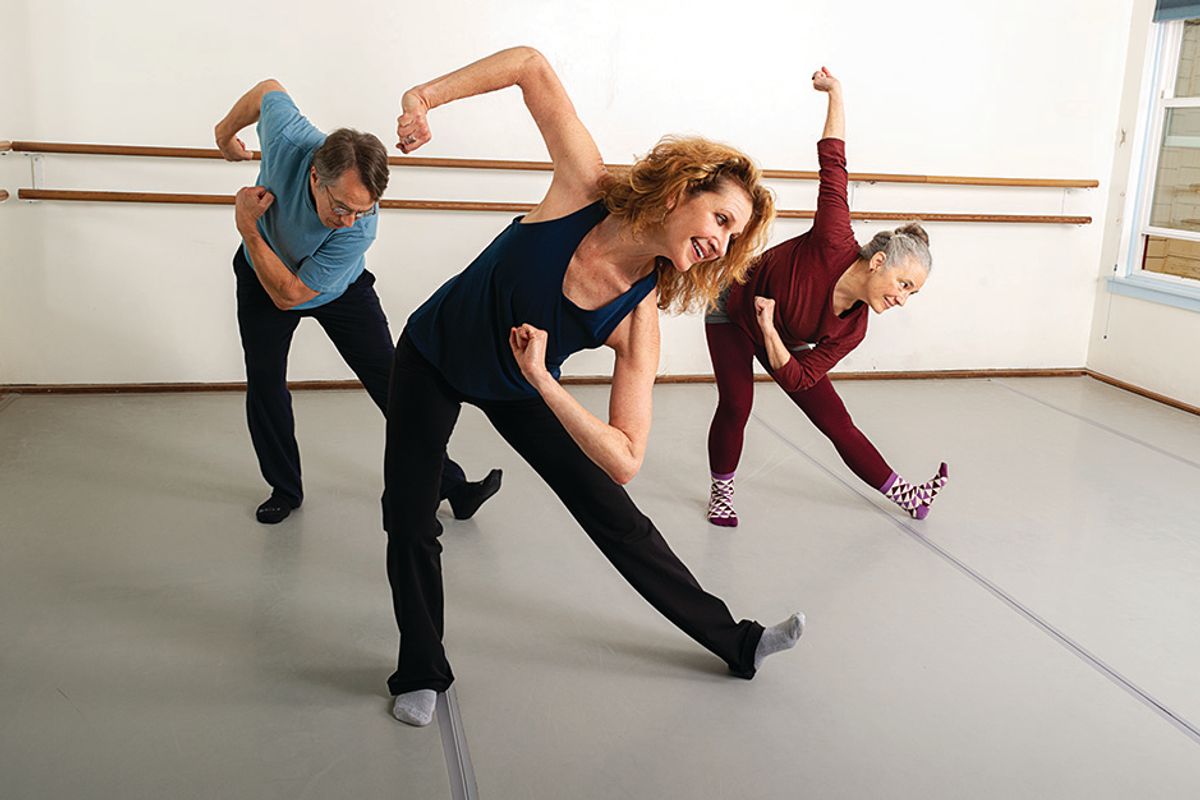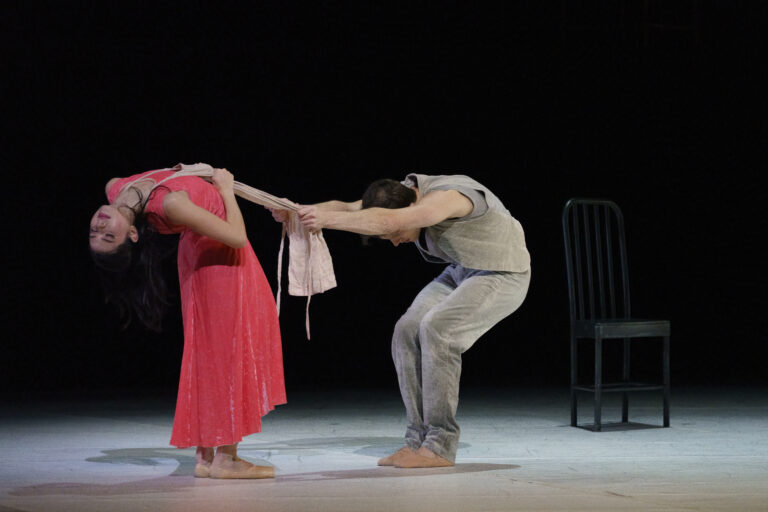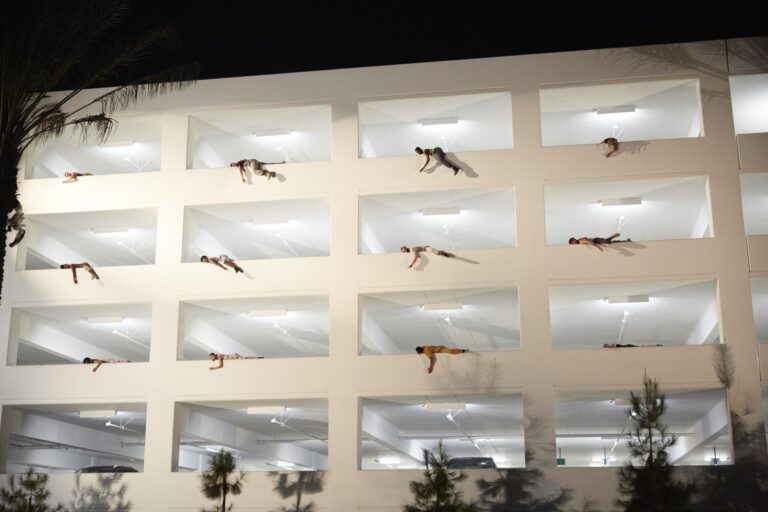
On a sunny Thursday morning in Berkeley, California, Robin Nasatir leads her modern class through a classic seated floor warm-up full of luscious curves and tilts to the soothing grooves of Bobby McFerrin. Though her modern style is rooted in traditional José Limón and Erick Hawkins techniques, the makeup of her class is far from conventional. Her students range in age from 30 all the way to early 80s.
As an active dancer and performer at 60, Nasatir felt that there was a real gap in what classes were available to her. “As an older dancer, there are just certain things that I need that I don’t get in other classes.” Talking with other dancers her age, she realized she wasn’t alone. Many of her peers were struggling to keep up both mentally and physically with the fast-paced, inversion-heavy modern classes that have become so popular.
With Modern for Older Movers and Returning Dancers, Nasatir has helped women returning from pregnancy, dancers returning from injury and older men and women looking for an enjoyable activity to rediscover their love of modern dance.
Though the majority of her students are in their 50s and 60s, Nasatir doesn’t shy away from teaching a technically rich and mentally challenging class. Central to her approach is the offering of multiple versions of each exercise. “First we have the vanilla ice cream cone, and then we add the sprinkles,” she says. “I create a class that could be done holding on to the barre—something that could be done slow and simply, but is still expressive and dancy, not just steps. Then I start adding complexity and range.” This could manifest in an added turn, a more complex foot pattern or an extra balance. She leaves it up to the dancer to choose which version they prefer. “Anyone having balance or memory issues could accomplish the class,” she says.
A thorough and mindful warm-up is especially important for this demographic. She takes the first few minutes of class to have students tune in and bring awareness to their bodies. “It takes longer to warm up an older body,” she says, noting that many of her older students have foot and ankle issues, so extra attention there is required. “Some of the pads on the balls of the feet have worn down, so it’s painful to be barefoot or go on relevé. Connective tissue is dryer and not as supple, so it takes longer to work into a plié,” she explains. Dancers can wear any footwear they desire in her class.
Even more challenging than the physical precautions are the mental concerns about learning and retaining movement. “Memory ends up being an even bigger thing than ‘I’m worried about my back or my hips or my feet,'” says Nasatir. To alleviate these concerns, she makes combinations short and simple, repeats them many times, dances along with her students and provides real-time verbal cues.
“The goal in this class is to find joy in moving today,” she tells her class. “If you don’t remember the combination, join the club! Perfection is not our goal.” The dancers look relieved as they continue an across-the-floor pattern full of under and over curves, spirals of the spine, a ball-change and an enveloppé.
Perhaps the most rewarding outcome has been the sense of community the class has fostered. “She’s hit on something really necessary in the modern dance world,” says April C. Taylor, a fellow modern dance teacher in her late 40s. Vicki Gunter, a former studio owner in her late 60s echoes the sentiment: “This class has given me the opportunity to keep dancing. It’s a gift.”
Nasatir hopes that others may bring the class to their own communities, giving dancers of all ages the opportunity to be seen. “As an older dancer, and especially as an older woman, you often become invisible,” says Nasatir. “I think there’s real value in offering a class where dancers feel seen and valued, and can connect with others and be a part of a community rather than just being the older person in the back of the room.”
Robin Nasatir’s Top-10 Tips for Teaching Older Dancers
Ease dancers into class; start slow.
Provide a thorough warm-up.
Prioritize alignment.
Offer multiple levels of challenge for each exercise.
Let students dance at the barre or take breaks as needed.
Avoid inversions, and if going in and out of the floor, move slowly and with care.
Give gentle and personalized hands-on corrections.
Keep combinations short and repeat them multiple times.
Use music that has variation and that students enjoy.
Be positive and emphasize enjoyment, not perfection.
Dance Teacher Technique July/August 2019
www.youtube.com




